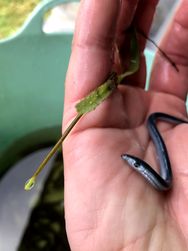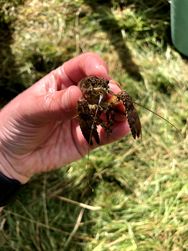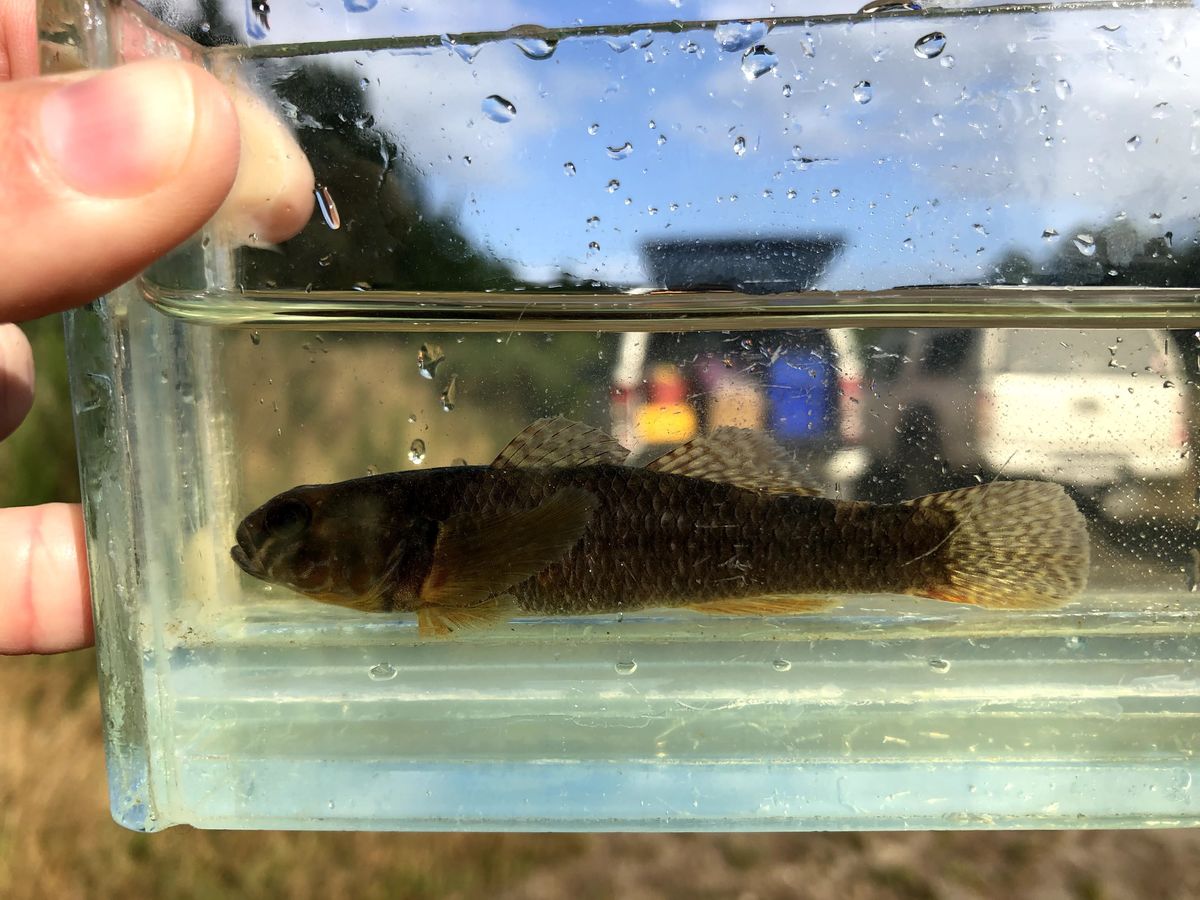
It’s O-Fish-ial, giant kōkopu love the rehabilitated lower Waituna Creek
Waituna Lagoon is a magical place because it is one of the few remaining large and relatively unmodified coastal wetlands that still exists. The Lagoon and surrounding wetlands sit at the bottom of a highly modified and intensively farmed catchment and are part of the wider Awarua Wetlands. Living Water’s research pointed to Waituna Creek being a key place where interventions could help reduce nutrients entering the sensitive Lagoon and an ideal place to restore habitat that could help some very important freshwater species thrive.

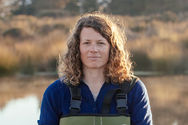
Nicki Atkinson
What has Living Water been doing in Waituna Creek?
“Like many waterways around Aotearoa, Waituna Creek has been straightened and deepened for drainage” explains Nicki Atkinson, Living Water Impact and Partnerships Manager “and the method of “maintaining” Waituna Creek for drainage is to use a digger to reshape the banks and remove aquatic plants and sediment, removing habitat for freshwater fish at the same time.” The Waituna Creek Restoration project aims to create better habitat for wildlife while reducing the sediment and nutrients flowing through to the lagoon.
Living Water chose two approximately 200 metre areas (500 metres apart) within a DOC managed marginal strip along Waituna Creek to trial the stream habitat rehabilitation. The transformation focused on improving habitat for fish by creating flow variability in the waterway with macrocarpa logs and bundles of manuka wired and anchored into the creek bed to provide shade and hiding places for fish. An artificial flood plain was created by re-profiling the waterway banks into a two-stage channel. When in flood, the two-stage channel spreads the water, slows the flow-rate and allows sediment and nutrients to drop out rather than being flushed into the lagoon downstream. Extensive riparian planting created shade and habitat for insects that provide food for fish. This transformation was completed in March 2018, you can read the full story here.
Atkinson says the objective of the trial was to test a new way to manage the stream channel so that native fish habitat is improved, while land drainage and the capacity of the channel to carry floods is maintained.
The annual survey
Annual fish population monitoring has been done between mid-late March, comparing the rehabilitation sites with control sites both before and after the rehabilitation was undertaken. It involves catching, identifying, weighing and measuring fish to assess the quantity and overall health of different species in the creek. Catchers stand across the creek using large nets to stop the fish slipping through while qualified operators use two electrofishing machines that create an electric current to temporarily stun, but not harm the fish. The catchers then can quickly scoop them up in buckets, give them to runners who take the fish to people identifying, measuring and recording the data. To minimise any stress on the fish, they are quickly grouped by species, weighed and measured before being returned to the creek. “We’ve had a great team working on this over several years and particularly want to acknowledge Sarah Crump, Jane Bowen, Chris Hankin and John McCarroll and all the people that have come to help us from DOC and Fonterra – thanks for your awesome mahi!” Adds Atkinson
the objective of the trial was to test a new way to manage the stream channel so that native fish habitat is improved, while land drainage and the capacity of the channel to carry floods is maintained

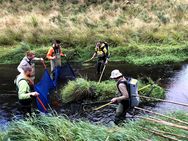
Waituna Creek fish survey full video
Watch as the Jane Bowen, Living Water Waituna Site Lead and Robin Holmes, Freshwater Ecologist at Cawthron Institute talk us through electrofishing, what we're trying a to achieve here at Waituna creek and why this is important for our future.
The Results
Results show the fish are flocking to the new habitat. Biomass of longfin tuna was around ten times higher in patches of stream around the installed woody structures. Giant kōkopu biomass increased significantly at one of the sites from a baseline of zero in the years before the structures were installed and in the last survey, two large giant kōkopu were found underneath the woody structures. This was one of the most exciting finds for Atkinson, as “it proves that the fish are using the cover provided by the instream structures”. Giant kōkopu and long fin tuna are classified as At risk – declining.
For the first time, small numbers of juvenile piharau/kanakana/lamprey were found in the two years following the rehabilitation. Lamprey are “nationally vulnerable to extinction”, the same category as the whio.
Another key part of the story is the engagement Living Water gets with landowners from this work. When the neighbouring farmers are involved and see the impact rehabilitation has had on the creek running through their property, they are motivated, leading to more on-farm action and enthusiasm to work together on other catchment-wide interventions. A key lesson learned through the Living Water partnership’s trials is that working collaboratively will make a difference. With DOC and Fonterra caring for nearly 40% of New Zealand’s land and most of the freshwater in Aotearoa flows through farmland so it’s important to demonstrate things can be done differently to change the future of farming and freshwater.
The Waituna Creek rehabilitation project and fish survey play a role in a much larger catchment intervention process and has encouraged Living Water to undertake similar trials on smaller scale waterways in the Ararira/LII catchment, like the Powell’s Road waterway enhancement project which has played a major role for one of Living Water’s biggest projects to date: re-thinking the drainage network in the Selwyn District in collaboration with key partners. No single organisation or sector has all the skills, knowledge and influence to improve freshwater and it requires a lot more than just on-farm action.
